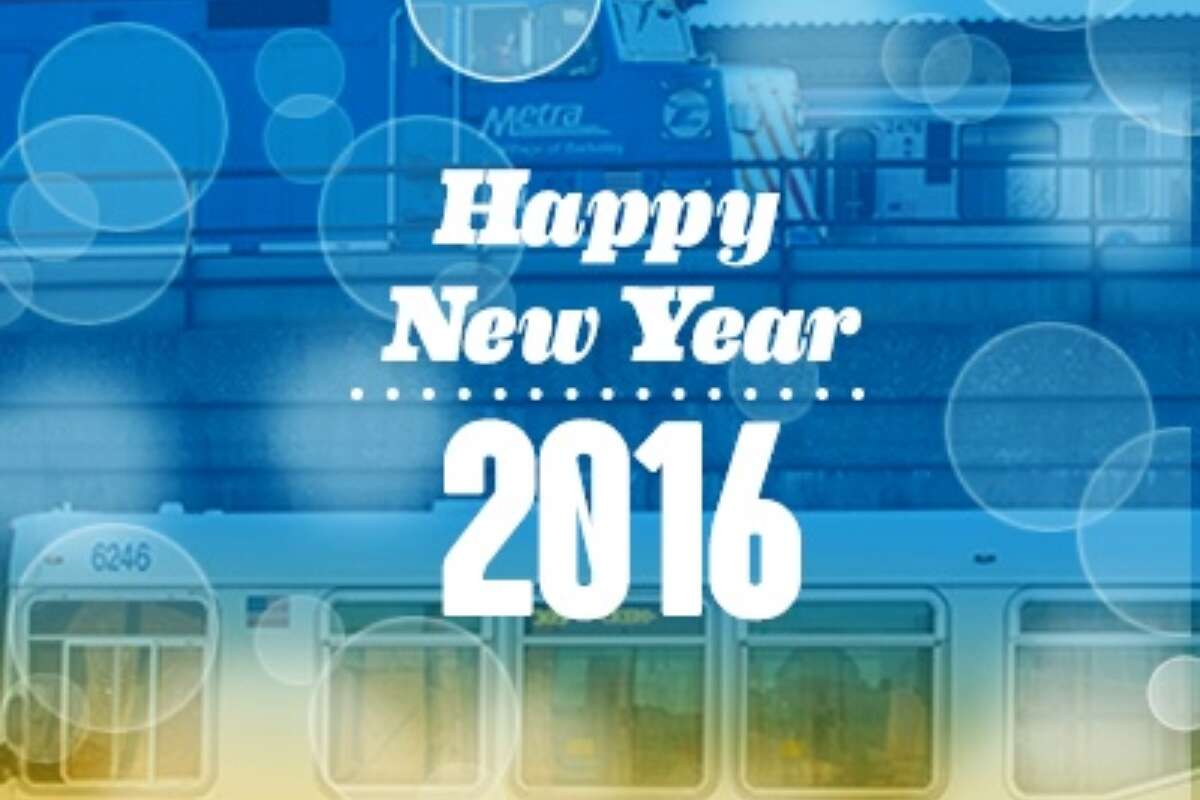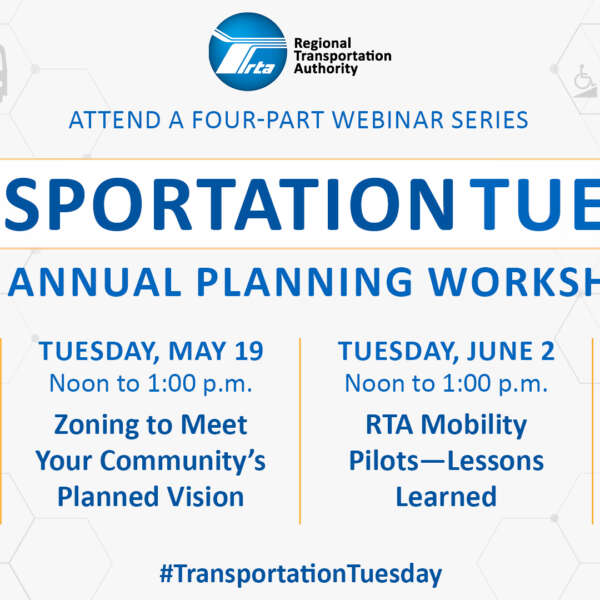RTA Chairman Dillard Letter to Riders: The RTA Worked Hard for Riders in 2015
December 28, 2015
December 28, 2015


Dear Regional Transit Riders:
On behalf of the Regional Transportation Authority (RTA) staff and Board of Directors, I would like to take a moment to celebrate the RTA’s accomplishments in 2015 and highlight how they may enhance transit service in 2016 and beyond. Specifically, the Board and I would like to share how our work has helped move our region toward the goals of the 2013-2018 Regional Transit Strategic Plan, jointly established by CTA, Metra and Pace (also known as the Service Boards) and the RTA. I want to note the unprecedented spirit of cooperation we all enjoyed this year. Our concerted and coordinated efforts have certainly contributed to making the riders’ public transportation experiences easier and more comfortable.
The RTA is the unit of local government charged with regional financial and budgetary oversight, funding and transit planning for CTA, Metra and Pace. 2015 has been a year of collaboration between the RTA and the Service Boards and the results of our work show this. The RTA and Service Boards are more successful than ever in turning plans and investments into benefits for riders. Our work includes advocating for more capital funding and transit parity for the region’s transit system and improving access to the transit system throughout the region.
The work of the RTA is critical but it may not always be easy for riders to see. For instance, riders in Chicago Ridge, Midlothian, Oak Forest, Palos Heights, Richton Park and University Park riders may not know the RTA programmed about $1 million to help pay for future improvements such as sidewalks, bus shelters, bicycle racks and pedestrian crosswalks there, to make it easier for residents to use the region’s mass transit system. Riders in Palatine may not know the RTA funded its community plans to enhance the area surrounding the Palatine Metra station. In Chicago, the RTA’s work on development of Transit Signal Priority is helping make the restoration of the CTA’s Ashland Express and Western Express bus routes possible. And, the RTA’s work on redeveloping our iconic Union Station will touch as many riders every day as travelers in Midway Airport.
Other RTA successes, tied to the goals of the Strategic Plan, include:
Provide Valuable, Accessible, and Attractive Transportation Options
In 2015, the RTA directly allocated $34 million dollars of Innovation, Coordination and Enhancement (ICE) funds to support various transit improvement projects. ICE-funded projects implemented in 2015 include the development of the Ventra Mobile Application, extra service to the Blackhawks Rally and other special events, and installation of additional automated signs with real-time CTA and Pace bus arrival information.
The RTA also programmed $880,000 in federal, RTA and local funds through its Community Planning Program to fund eight transit-oriented developments (TODs) and transit improvement projects that will commence in 2016. Projects range from convening a group of developers to identify development options around the Village of Calumet Park's Metra station to improving transit connections to major employment centers in DuPage County. The RTA has allocated nearly $20 million in federal, RTA and local funds for 180 projects throughout the region through this program over the last 18 years.
This year marked the 25th anniversary of the passage of the Americans with Disabilities Act (ADA). The RTA, along with the Service Boards, participated in the “ADA 25 Chicago” partnership initiative which included the Disability Pride Parade and continuing our commitment to ensuring that riders with disabilities have access to safe and reliable public transportation.
The RTA partnered with the City of Chicago’s Department of Family and Support Services (DFSS) to co-locate RTA customer service agents at four DFSS office locations. The move serves to better accommodate riders with disabilities and older adults who currently use RTA's reduced fare and ride free permits. RTA staff oversees the program that provides more than 600,000 qualifying older adults and riders with disabilities with reduced fare and free ride permits.
The RTA’s Group Transit Orientation program provided 199 presentations to 3,728 customers in 2015 regarding the accessibility of CTA, Metra and Pace buses and trains at agencies that serve people with disabilities and older adults.
Ensure Financial Viability
The RTA’s credit rating is among the best in the public sector.
In August, the RTA board unanimously approved the 2016 budget funding amounts to be allocated to CTA, Metra and Pace for their operating budgets nearly a month ahead of the statutory deadline and unanimously approved the regional operating budget and capital program on December 17. The $2.9 billion transit regional operating budget authorizes operations expenses of:
Subscribe to our Newsletter
Related Articles
 RTA celebrates 30 years of the Americans with Disabilities Act
RTA celebrates 30 years of the Americans with Disabilities Act
This month the RTA is celebrating the 30th anniversary of the Americans with Disabilities Act (ADA). The ADA transformed society and provided opportunities f...
July 29, 2020 Take a survey to help improve mobility options for older adults and people with disabilities
Take a survey to help improve mobility options for older adults and people with disabilities
Do you or someone you know face transportation challenges? The Regional Transportation Authority (RTA) wants to hear from you about transportation issues and...
May 7, 2020 Transportation Tuesday Webinar Series: Attend the 2020 RTA Annual Planning Workshop Virtually
Transportation Tuesday Webinar Series: Attend the 2020 RTA Annual Planning Workshop Virtually
The RTA is launching a four-part webinar series in place of the Annual Planning Workshop due to the ongoing COVID-19 pandemic. The free, virtual sessions wil...
April 17, 2020 Announcing the 2020 Access to Transit Program Call for Projects for Small-Scale Capital Projects
Announcing the 2020 Access to Transit Program Call for Projects for Small-Scale Capital Projects
We are excited to announce that the call for projects for the RTA Access to Transit Program is now open. The RTA launched the Access to Transit program in 2...
March 13, 2020 Happy International Women’s Day and Women’s History Month from the RTA
Happy International Women’s Day and Women’s History Month from the RTA
Each year the RTA celebrates Women’s History Month in March to recognize the women who work at, and ride, CTA, Metra, and Pace every day. The celebration coi...
March 8, 2020 How's Your Ride? Take This Survey
How's Your Ride? Take This Survey
We’d like to hear your thoughts about public transit! The RTA is sponsoring a system-wide customer satisfaction survey and would like your feedback about yo...
March 2, 2020